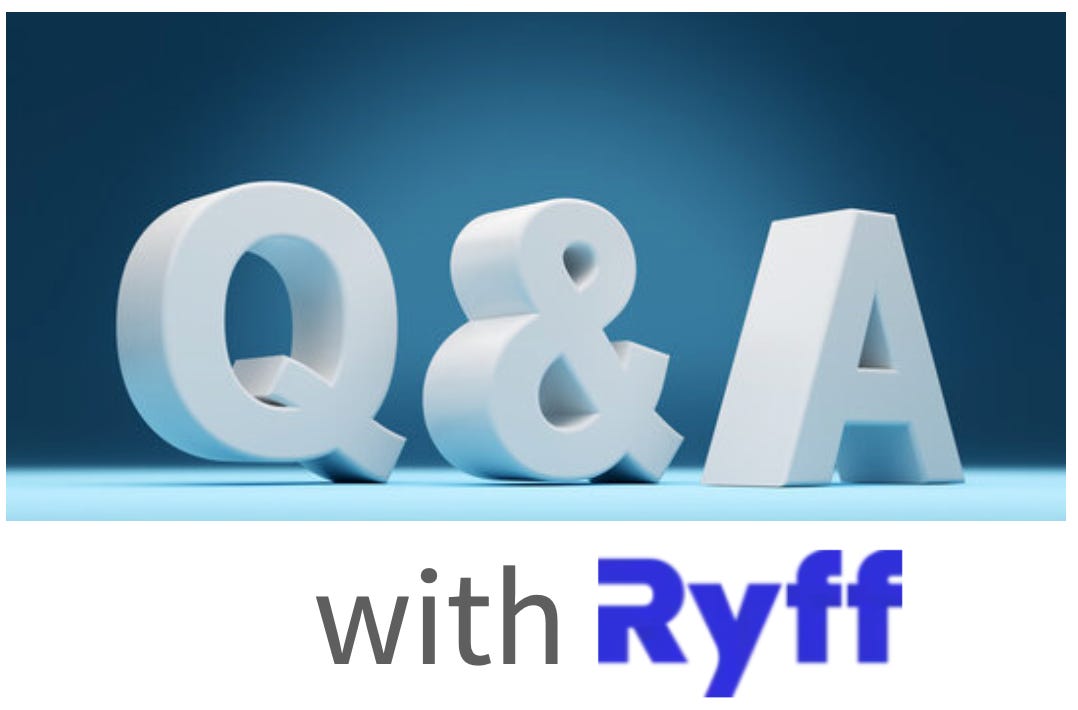Cannes Lions 2025 is next week. Between Quo Vadis and Advertising Economic Forum, we have a lot going on. Check it out here.
Apropos of this post, if you want to learn about the most exciting blue sky in CTV — in-scene virtual product placement — then get on this for an amazing lunch next week at Chez Verve with special guest Linda Cronin, Chief Media Officer, Media Monk.
Welcome back to Quo Vadis Green Shoot AdTech Interviews.
In this series, we step into the shoes of “AdTech Equalizers” — the green shoot companies changing how the advertising job gets done. We'll delve into their worldview and unveil new strategies, tools, and thinking that make advertisers better off.
Today, we have the great pleasure of speaking with Steve Cox, CEO of Ryff, the leader in AI-powered in-scene advertising, an innovative new ad unit that allows brands to connect to consumers authentically, integrated into the moments and the content they love, not the commercials they avoid.
Q1: What is in-scene advertising and why is it important?
A: Steve
In-scene advertising, or Virtual Product Placement, creates opportunities for brands to be digitally integrated into a wide range of new and catalog content—including movies, TV shows, social content, and music videos—and with a wide selection of placement options such as in-scene billboards, product placement, on-screen graphics, digital out-of-home and more. In-scene ads have been around for decades, but are growing in popularity due to several recent trends in content viewing:
First, viewers are spending more time on ad-free tiers. Secondly, major platform ad-supported tiers have reduced average ad load from 18 minutes to 4 minutes per hour. And perhaps most importantly, viewer acceptance of video ads has plummeted to the point where most ads are ignored. This means that even though ads are being shown, they are not reaching viewers. In-scene advertising provides a solution to these issues because, simply put, it's unavoidable, integrated into the content itself, and seen by every viewer.
Q2: What is new about the Ryff in-scene solution?
A: Steve
Delivering in-scene advertising effectively, and in a way that scales, is a complex technical challenge, and one that requires a sophisticated technology platform. Ryff's solution is a tech-first design that heavily utilizes the bleeding-edge capabilities of AI. We start with our Scene Intelligence platform that scans a title and not only identifies the potential locations in a show or film where a virtual placement can be integrated, but also derives the contextuality and brand safety elements of the location. Machines are able to tell us this is a location where a specific brand would fit, what is happening in the scene, etc. With this level of metadata generation, we are able to better automate the in-scene inventory creation process and give producers/owners of the content the ability to directly control the level of monetization in their titles. This has enabled Ryff to land new premiering content on top-tier platforms, from A-list talent, while also meeting the needs of the advertiser.
Q3: Why would I replace my CTV ad spend with a passive in-scene placement?
A: Steve
Our tests have shown that customers have a higher recall of in-scene placements than traditional 30-second ads. This is because in-scene ads are always viewed since they are within the title vs. 30-second ads, which are shown during an ad break and mostly ignored. When you consider the cost involved in creating a traditional 30-second CTV ad spot, not to mention the high CPMs charged by premium platforms to secure the spot itself, in-scene advertising is a much more efficient ad unit. Plus, in-scene ads are visible to viewers in both ad-supported and SVOD tiers, which is territory no traditional ad buy can secure. However, it's important to note that we don't see VPP as a replacement for 30-second ads - in fact, the best recall and purchase intent metrics appear when the two ad types are combined, with placements appearing in content either side of a 30-second ad for the same brand.
Q4: How are in-scene ads bought? Is this strictly a sponsorship play?
A: Steve
There are multiple methods to purchase in-scene ads. They can be bought directly from Ryff through our in-house sales team, they can be bought through the ad sales team of the streaming platform, or they can be bought programmatically. New premiering content is often sold on a flat rate card basis, but most in-scene ad units utilize a CPM based model. In the CPM model, we are able to personalize by demographic, geolocation, and other facets, so you only pay for the impressions delivered to the viewer you want to reach.
Q5: How are in-scene ads measured for performance?
A: Steve
In-scene ads can be measured the same way as traditional video ads, utilizing pixel-based tracking. This allows the advertiser to track their in-scene ad performance in their preferred DSP and use the set of metrics that work best for them. We also offer brand lift studies through a number of partners, and tailor post-campaign outcome reports to whatever KPIs the brand is looking to achieve for their given campaign.
Disclaimer: This post, and any other post from Quo Vadis, should not be considered investment advice. This content is for informational purposes only. You should not construe this information, or any other material from Quo Vadis, as investment, financial, or any other form of advice.



